Frankfurz, 2021, Schwabinggrad, Munich
Barrel-organ concert and poster series.
Video documentation here
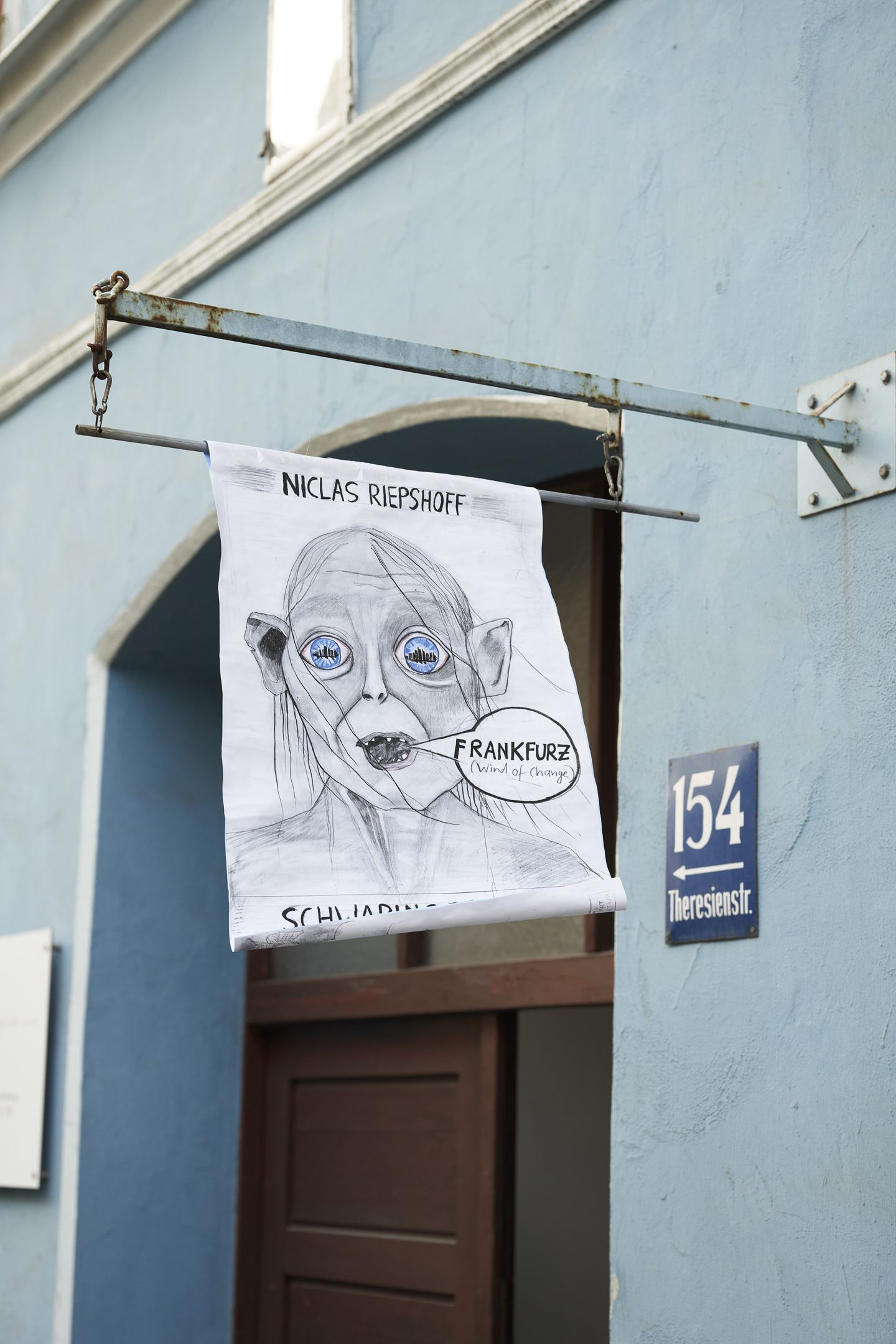
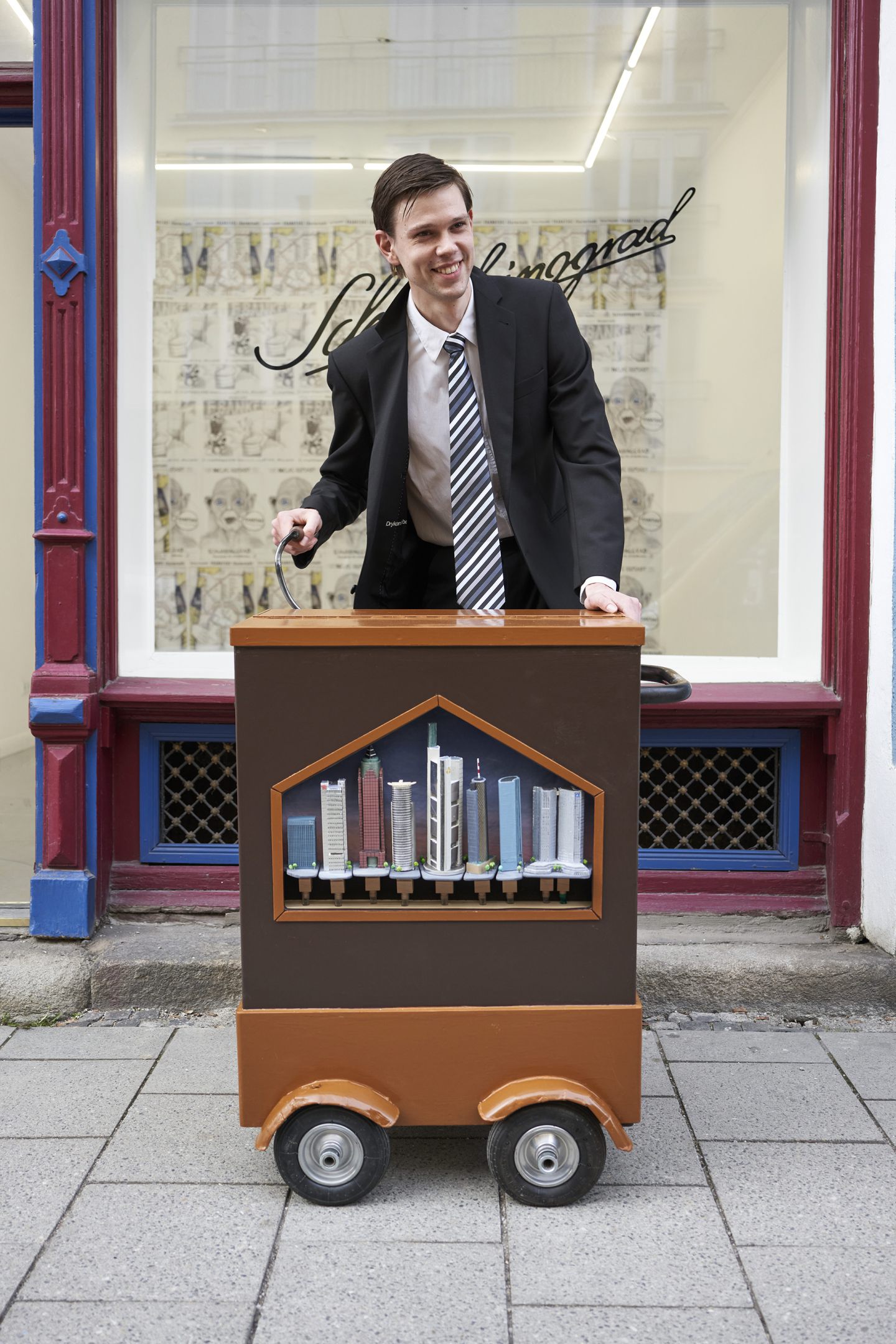
Skyline Organ (Frankfurz), 2021, customized barrel organ, brass pipes covered with architectural models made from cardboard, aluminum foil and acrylic paint, customized punchcard „Wind of Change“, 100 x 80 x 60cm
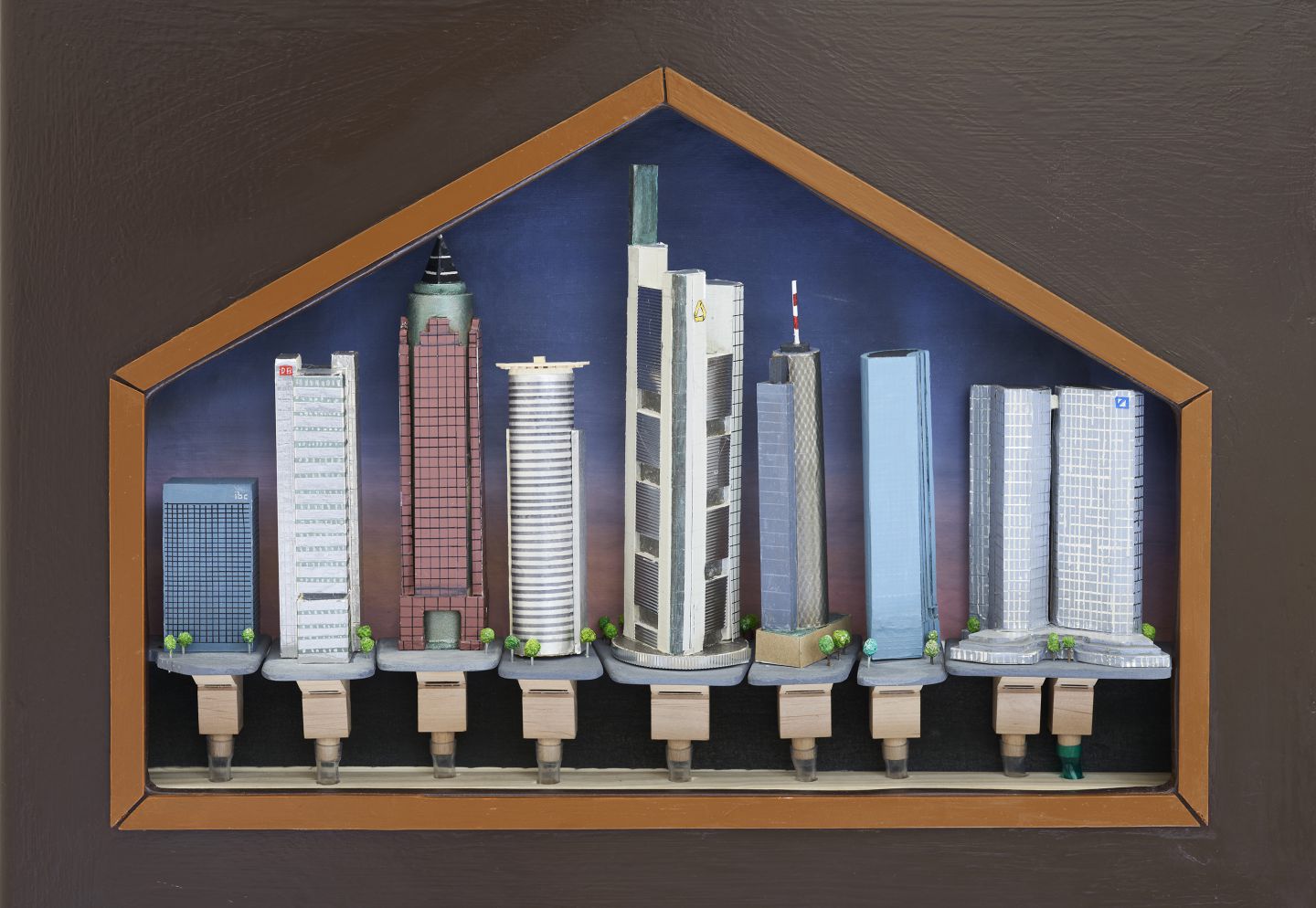
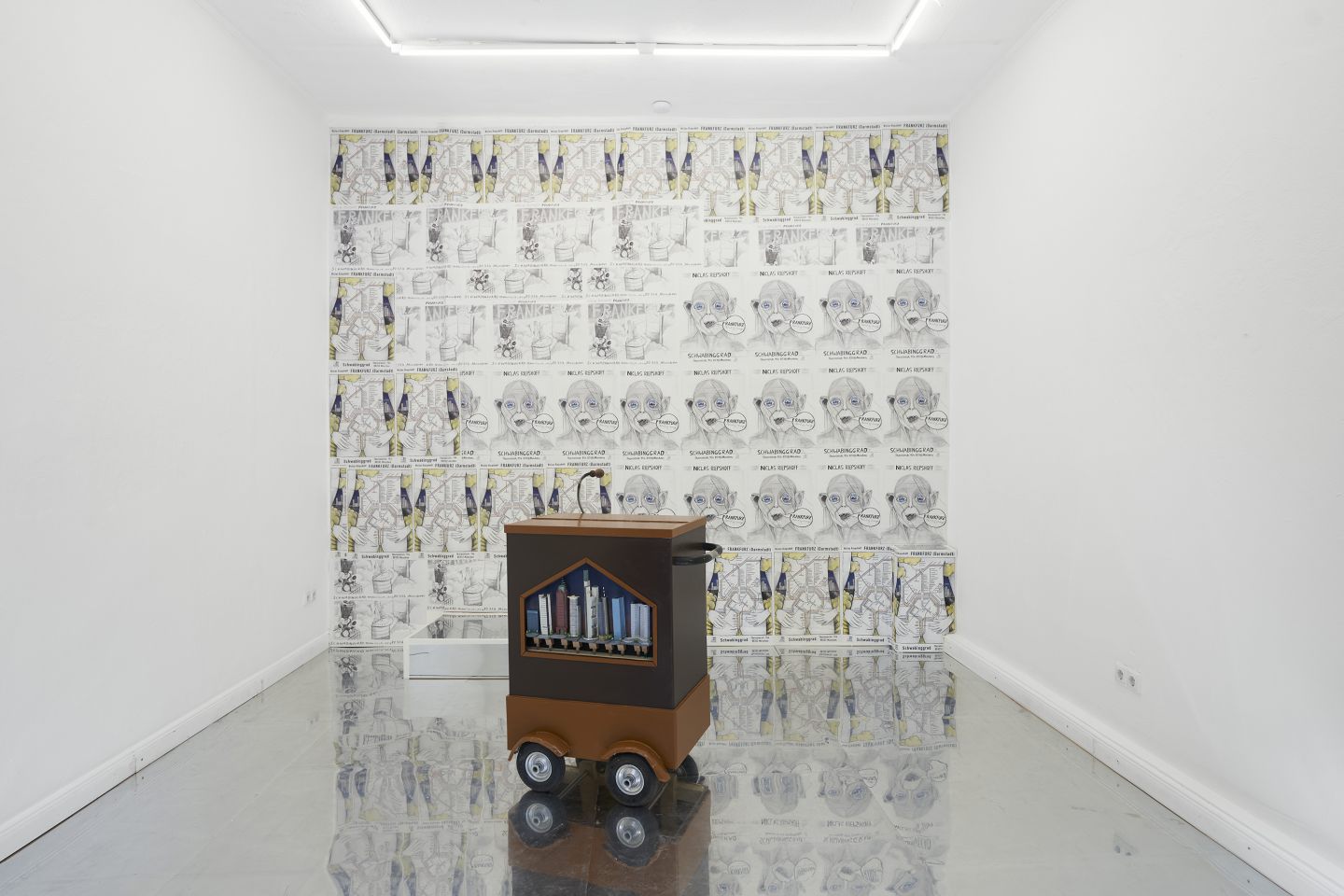
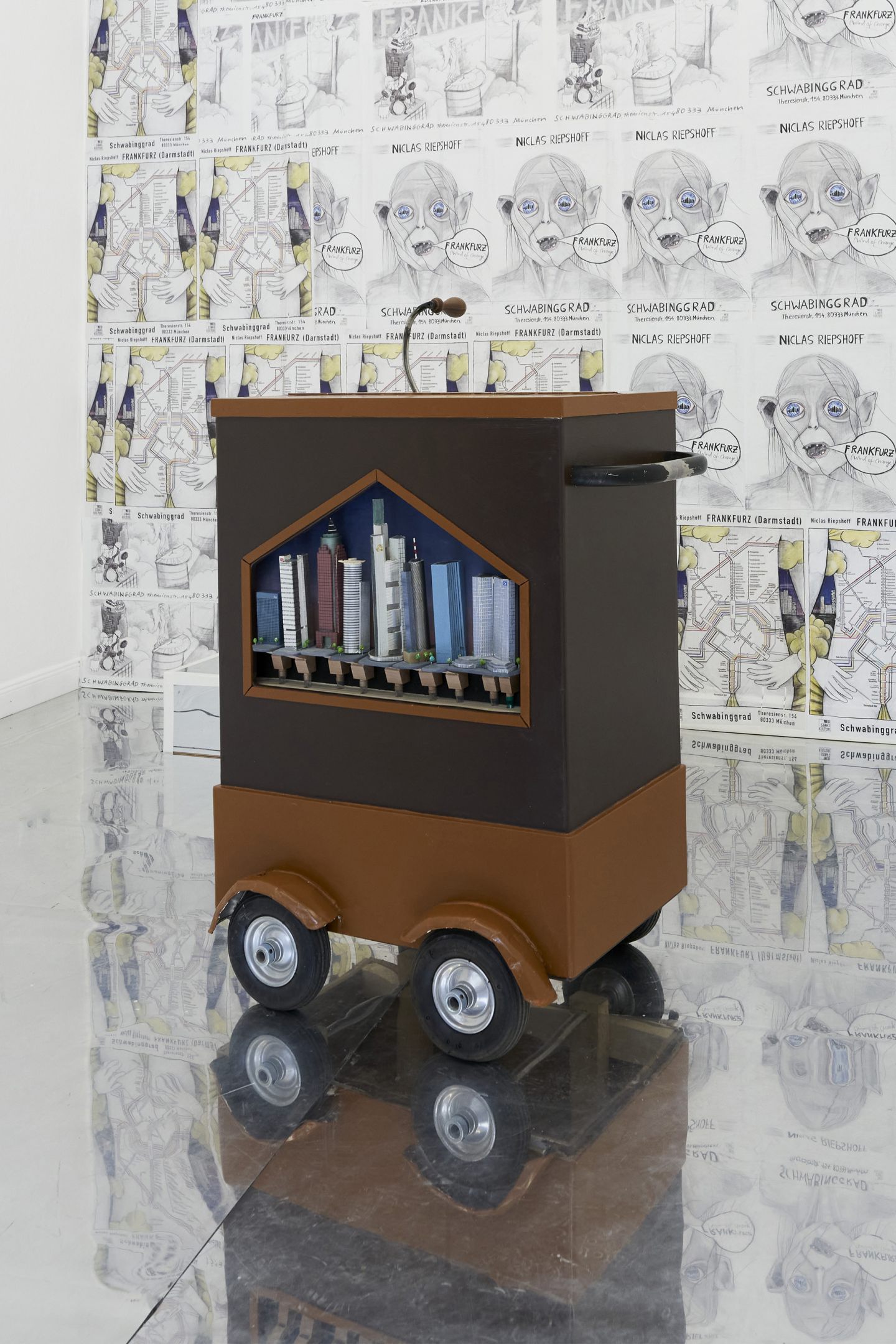
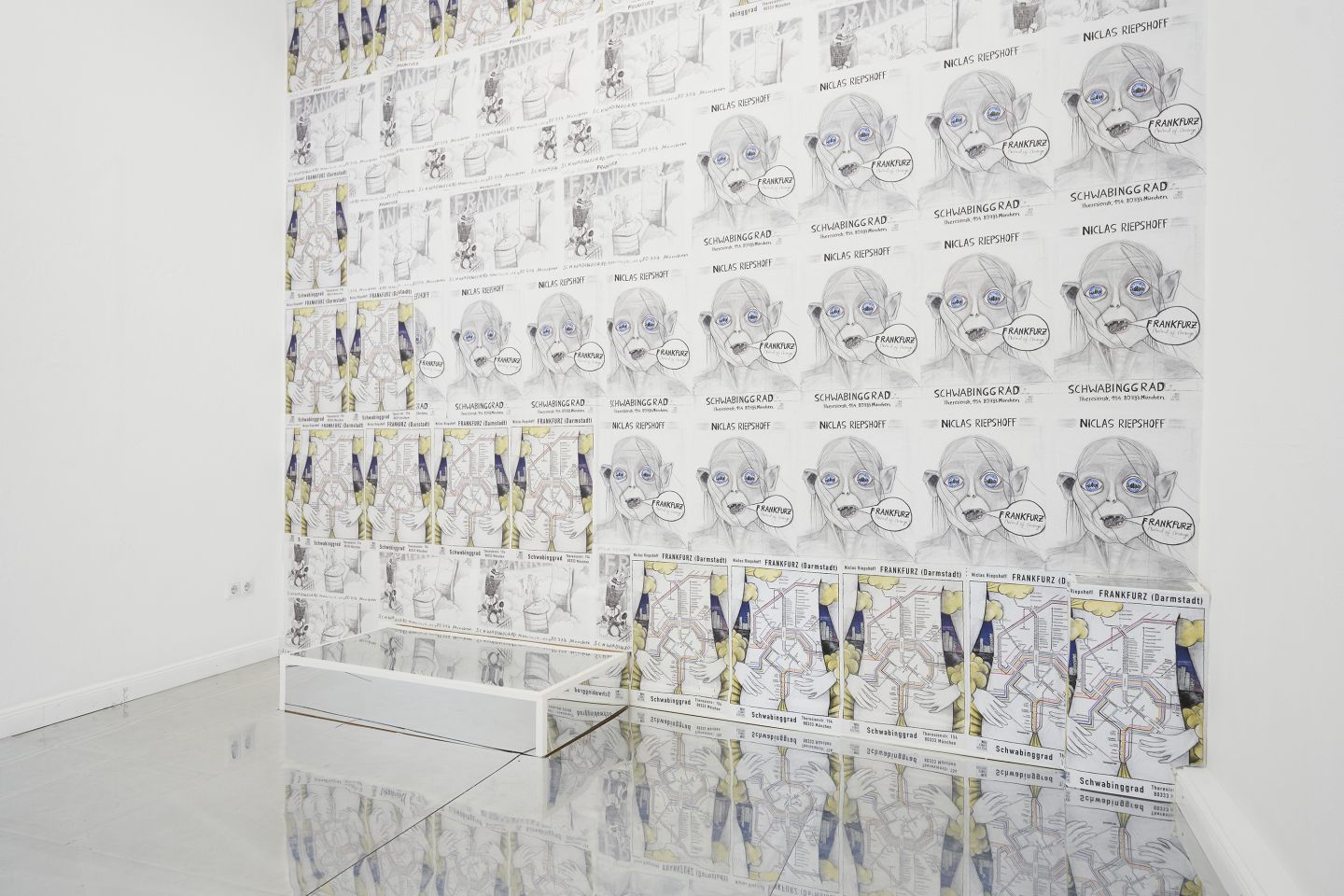
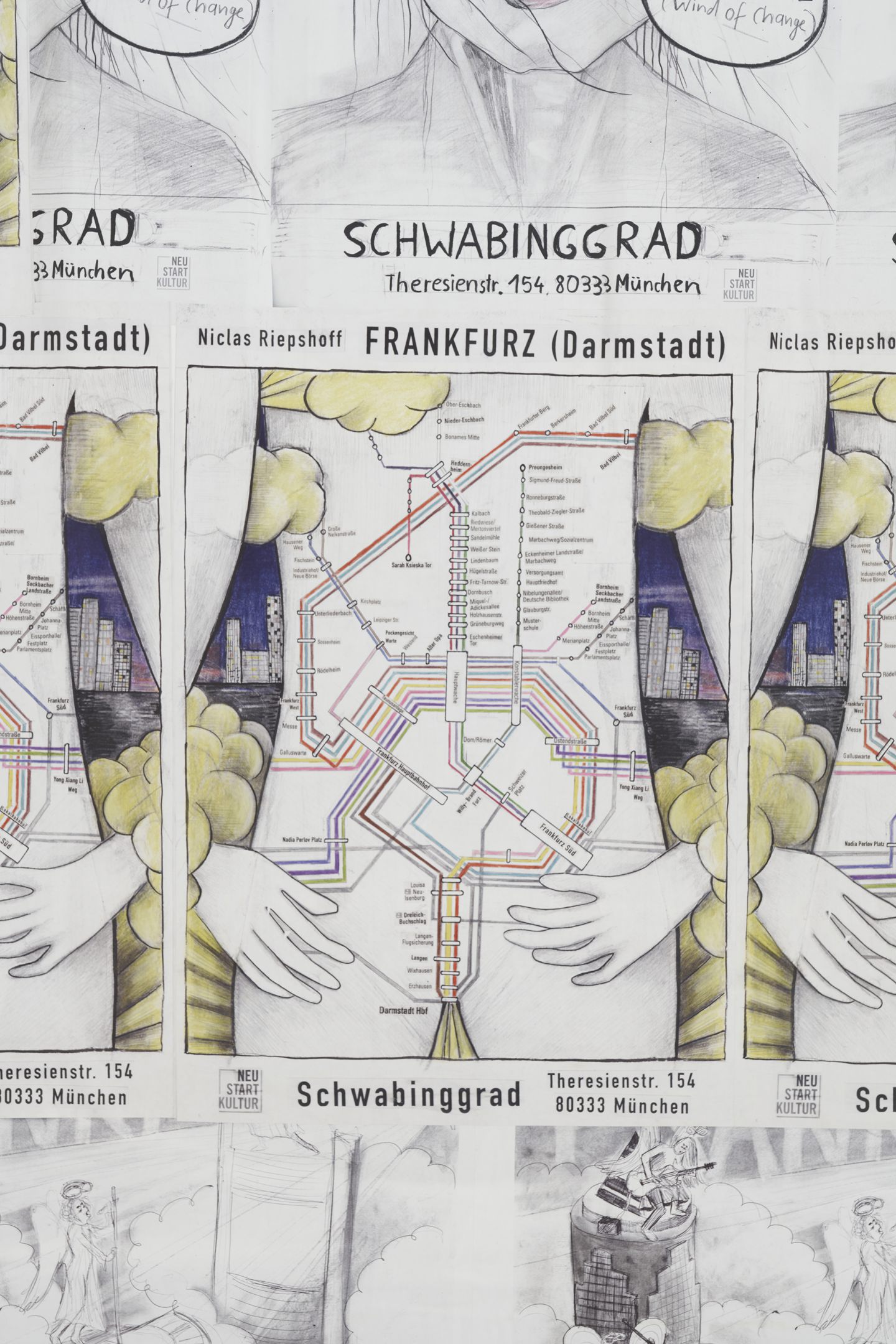
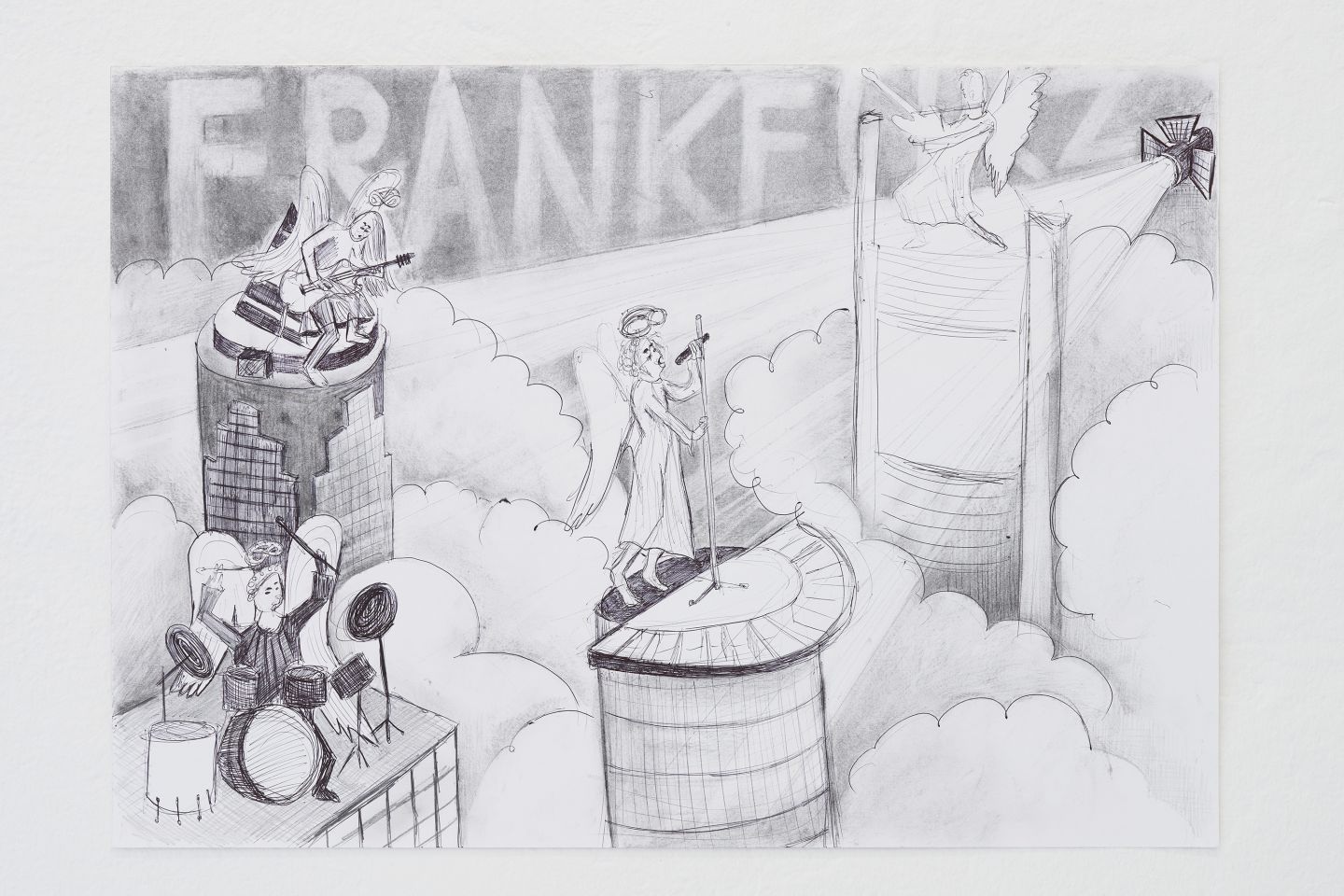
Untitled (Frankfurz), 2021, charcoal and pen on paper,
59,4 x 42,0 cm
Press release:
Schwabinggrad is pleased to present FRANKFURZ, an exhibition and concert series conceived by Berlin-based artist Niclas Riepshoff.
A custom-made, operative barrel-organ made of wood and other materials, such as leather, hardware and painted canvas, is the protagonist of FRANKFURZ. Its paneling is adorned with a miniature sculptural skyline of the city of Frankfurt that simultaneously functions as organ pipes.
Upon turning the crank, the organ plays a version of The Scorpion’s 1990 hit “The Wind of Change”: an inner mechanism of pipework, blower and wind chest is being set off to produce air blasts which are first stored and pressured and then distributed to a variety of valves. The air is blown out through the single pipes as a limited amount of sounds according to the information inwrought on a punch card.
Starting point of consideration for this sculpture were the acoustic spinoffs of the so-called “downdraught” effect – thermodynamic sounds that are being produced by gusts of wind amongst the skyscrapers of Frankfurt and other cities. These phenomena are a tangible effect of the workings of the finance world and their housing in opaque, glossy, high rising buildings. When air hits the skyscrapers, with nowhere else to go, it is pushed up, down and around the sides. With FRANKFURZ, Riepshoff created a witty analogy between the obscured mechanisms being played out in and around the towers and within an organ. Everything has to be in a constant flow.
This comparison is pushed further in the apparatus’s and producer’s potentially malleable positions within the value chain as a work of art or, respectively, as a nomadic entertainment instrument. Here, folk meets modernization, low culture meets high culture, tradition meets socalled progress, “lumpenproletariat” meets elite. In its ontological existence and contextualization as an artwork, the piece carries the model of the banking system in its “heart”.
“Wind of Change”, released in 1990, right after the fall of the Berlin Wall and thus the beginning of the collapse of the Soviet Union, behind this backdrop humorously carries a modified notion of freedom as free market and individualism into a repetitive, monotonous grinder.
Viewers are invited to play the organ.
- Five o'clock Shadow
- Erziehungskunst
- Snailhouses for Berlin
- Baby
- Offene Fenster
- Graue Immanenz
- Frankfurz
- CONNY: Find me in the Filling
- A Stitch in Time
- Die ZWEITE HAND
- Berliner Öfen
- In Vitro
- CONNY: Changing Batteries
- Spoons over Knifes
- Absolutes Gehör
- Three Poses for a Newborn
- This is how we stand
- Bin Durstig